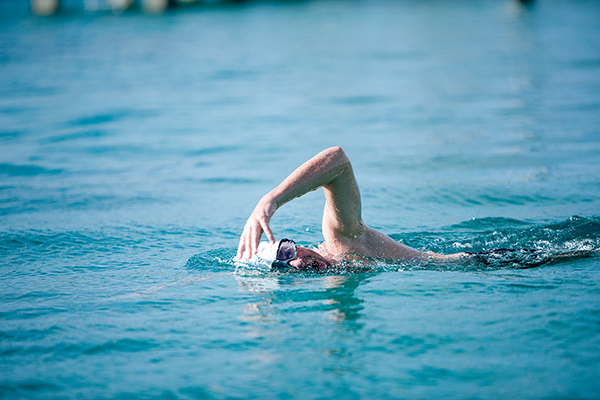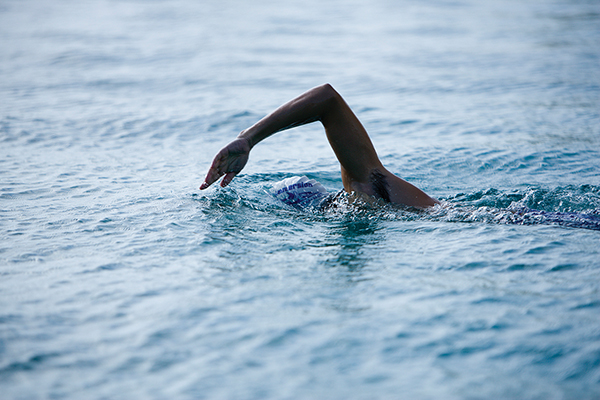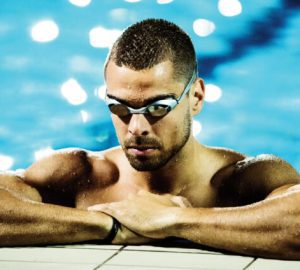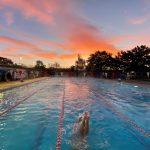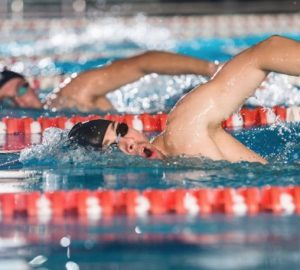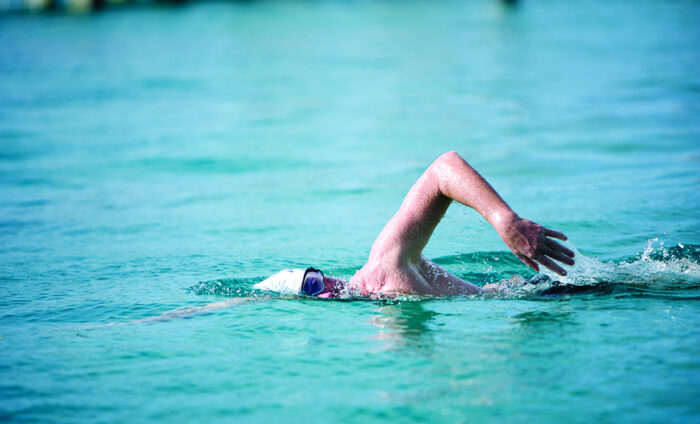
Three steps to better recovery
When swimming freestyle, we typically stroke about once a second. How much time do you devote to examining – or seeking to improve – what happens during that brief interval? And if you do, what do you focus on?
The freestyle armstroke has two phases:
1. You push back to move the body forward – usually called the ‘pull’ or ‘stroke.’
2. You bring the arm forward to push back again – usually called the ‘recovery.’
Basic human instinct and traditional approaches to technique both tend toward a nearly exclusive focus on pushing back. After all, we reason, that’s what moves us forward. We seldom pay much attention to recovery because, well, it doesn’t move you forward.
Because the arm moves through the air (where it weighs many times more than it does in water) even small movement errors – of which we’re seldom aware – can cause significant disruption to every other part of the stroke.
Learning a specific set of recovery skills will keep your body balanced, stable and on course; channel energy and momentum forward; and keep arm and shoulder muscles fresh. These skills will also improve propulsion. It’s impossible to apply effective pressure towards the rear, if your hands are busily trying to ‘steady’ a wobbling or wiggling core.
Three ways to increase efficiency
Developing three qualities in your recovery will ensure a stable core:
1. Symmetry
Each arm’s action should be a mirror image of the other. If one arm swings just a little wider or higher, it will direct uneven forces to your core body – causing legs to bend excessively or splay far apart.
These uneven forces will also divert you to one side. In the pool, you make constant unconscious mini-corrections, wasting energy every time. In open water, you can’t escape noticing their effect as you constantly veer off course. There is no easier way to swim faster in open water than by learning a symmetrical recovery – and consequently swim straighter.
2. Relaxation
Suspending a relaxed forearm and hand from your elbow helps efficiency by:
- Eliminating ballistic forces caused by a tense or swinging hand and forearm. Ballistic forces send your energy in every direction except forward.
- Giving hand and arm muscles a rest break. Those muscles must work during the pushing-back phase. Keep them fresh by turning them off between strokes. In open water, this is even more important because you swim thousands of uninterrupted strokes, rather than the 16 to 20 you take between each wall in the pool.
- Another benefit in open water: when a wave – or another swimmer – hits a relaxed arm, it absorbs that force. A tense arm transmits the impact to your core body, hurting stability.
3. Channel energy forward
A fundamental principle of swimming efficiency is that body parts above the surface should move in the direction you’re travelling. Lifting your hand more than the minimum required to clear the surface hurts balance and wastes energy. Moving them laterally diverts energy sideways
The Three-Part Recovery
While the recovery takes only a split-second, it has three distinct critical moments. Though each occupies a vanishingly brief interval, because your arm is above the surface, small skills can bring big rewards.
1. Swing Away
Among our most common instincts is to lift the elbow or pull it toward the spine as it exits the water. Both hurt efficiency. They also increase shoulder injury potential. To keep your body balanced and stable – and achieve a healthy, comfortable range of motion – swing your elbow away from your hips at the low angle shown.
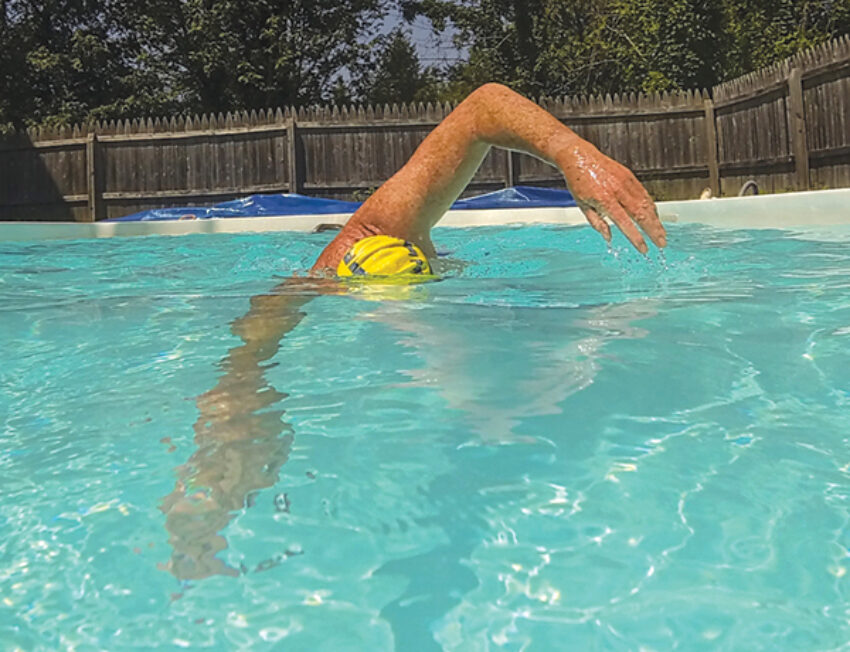
2. Rag Doll/Paint a Line
This skill eliminates ballistic forces from recovery, and moves your arm in the direction you’re traveling. Learn it via two focal points. Focus on each individually. They’ll soon combine effortlessly into a single seamless action.
● Hang forearm and hand from your elbow like a rag doll. Feel that every muscle below your elbow is turned off. A simple way to check: fingers should be slightly separated.
● Visualize a straight wide line from exit to entry points. Mindfully ‘paint’ that line on recovery. Graze the surface with fingertips to heighten awareness of how wide and straight the line is.
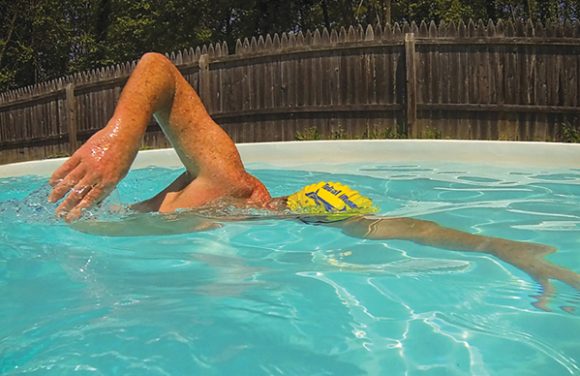
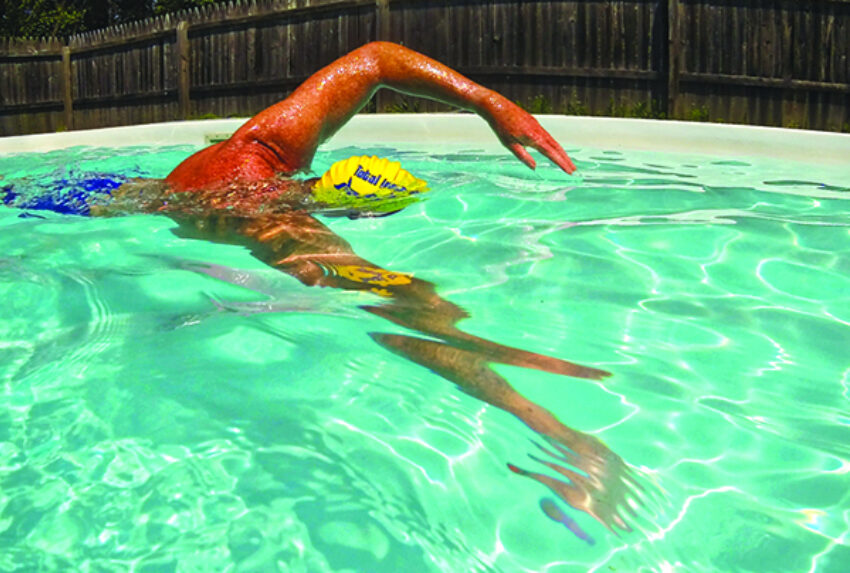
3. Ear Hop/Mail Slot
As above, this skill is best learnt by focusing individually on two focal points, then gradually merging them into a single thought and action.
● Visualise a bar projecting from your ear. When your line-painting fingertips reach the bar, hop barely over it then drop deftly into the water. (Don’t ‘stab’ at the water; let gravity drop your hand in.)
● Cut a slot (like a postbox letter slot) in the surface with fingers. Slide hand and forearm through this slot. The hand is easy; your forearm takes care. Enter the slot with a minimum of noise or splash.
